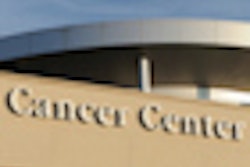Providence Cancer Center in Portland, OR, is one of a growing number of facilities that is working to improve care for patients with oral cancer and head and neck cancers through a multidisciplinary program that brings together a spectrum of treatment providers.
To illustrate the challenges many oral cancer patients face, R. Bryan Bell, MD, DDS, medical director of the Oral, Head and Neck Cancer Program at Providence, described the extreme effects the illness and its treatment had on one of his patients. The woman had undergone surgery, chemotherapy, and radiation for her oral cavity cancer.
"This was a beautiful 32-year-old woman who had lost all her teeth and couldn't chew," Dr. Bell told DrBicuspid.com. "She had aged about 40 years during treatment, and she just looked awful. But she had no means of affording needed dental rehabilitation, which would have cost about $60,000. People need to see what happens when you don't restore these patients."
Dr. Bell used the woman's case to convince officials at Providence Health, which oversees the medical center, of the need for a multidisciplinary approach for these patients. The new cancer treatment center, which opened last month, is a unique collaboration between dental and medical oncology specialists.
The center provides coordinated care for oral cancer patients who often need expensive and complex dental rehabilitation, regardless of their ability to pay, according to Dr. Bell. His team includes head and neck surgical oncologists, radiation oncologists, medical oncologists, otolaryngologists, neuro-otologists, and a maxillofacial prosthodontist.
"That's what really makes us unique," Dr. Bell explained. "We're integrating dentistry into the multidisciplinary head and neck cancer treatment team."
The unusual approach bridges the gap for patients dealing with the broad-ranging aftereffects of cancers of the oral cavity, head, and neck.
"We have a disconnect in this country regarding medical and dental care, and it's particularly acute regarding cancer patients," Dr. Bell observed.
Most people have affordable access to care for common dental procedures such as restorations and root canals, he noted, but oral cancer patients often need extensive and expensive oral treatment.
"A majority of patients undergoing head and neck cancer treatment, and cancer treatment in general, will have some sort of oral health problem, and many need significant dental care -- whether it's as simple as a filling or crown or as complicated as bone graft reconstruction with implant supported prosthetic rehabilitation," Dr. Bell said. "For many of these patients, the price tag is in excess of $40,000 to $50,000."
Changing risk factors
The Providence center treats more than 200 head and neck cancer patients annually; of these, about 150 involve cancers of the oral cavity. The youngest oral cancer patient was 19, and the oldest was 100, Dr. Bell said.
Becky Roth, 49, is one of a growing number of patients that Dr. Bell sees who develop oral cancer despite having no traditional risk factors, such as smoking and drinking. Surgeons removed most of her tongue and the lower segment of her mandible. Microvascular surgery was done to harvest her fibula to reconstruct her mandible; her second fibula was removed when Roth's cancer recurred. A titanium plate was used to hold the fibula in place.
"We take a large segment of fibula bone with the muscle, soft tissue, and skin attached to it and do some carpentry on it to fashion it in the shape of a mandible as best we can," Dr. Bell explained.
Surgeons often use the fibula osteocutaneous free flap, which is very common in head and neck centers, he added.
Despite losing both fibulas, Roth has been able to resume one of her passions -- running -- and has posted some of her personal best times. "She's just a remarkable person," Dr. Bell said.
Dr. Bell has noticed a growing number of oral cancer patients, particularly with cancers in the oropharynx and oral cavity. "That's where we're really seeing a difference in the change of demographics," he said. "We're seeing more younger patients -- men and women who never smoked or rarely drank alcohol, like Becky."
The majority of patients with oropharyngeal cancer have human papilloma (HPV)-driven cancers, but that's not necessarily the same with oral cavity cancer, he noted.
"It is clear from data that HPV is a sexually transmitted disease, it is clear that HPV causes oropharynx cancer, and it is clear the risk for developing HPV-driven oropharynx cancer increases with the number of sexual partners," he said. "But presumably people have been having oral sex longer than the last 15 years. Just because we haven't identified what else is involved doesn't mean there are no other contributing factors."
Dr. Bell supports the use of HPV vaccines for young girls and boys. "I have an 8-year-old son, and I'll certainly get him vaccinated in the next six or seven years."
New technology, new treatments
New technology and multidiscipline treatments have vastly improved the quality of life for oral cancer patients, Dr. Bell pointed out.
"I think that's where we've really come a long way in the last couple of decades," he said. "While we've made only modest improvements in overall survival rates -- 58% of such patients will be alive in five years, which hasn't changed much in the last 50 years -- where we have made tremendous strides is in our ability to restore patients to form and function. Patients are now living longer with their cancer, and they're living much more functional lives."
Dr. Bell described how improved treatments have affected patients like Roth. "We can remove two-thirds of her mandible and reconstruct it with vascularized tissue and implants, and give her teeth to chew with, to speak with, to swallow -- all those things," he said.
New technology and surgical methods are decreasing the adverse effects of chemotherapy and radiation therapy in a personalized way, he added.
"We're trying to match the disease with the cure," he said -- by using robotic surgery, for example.
"We are now able to approach tumors in the back of the throat and base of the tongue with a surgical robot in a manner that used to take a much larger operation and splitting the jaw," Dr. Bell explained.
Transoral robotic surgery (TORS) has allowed reduced doses of radiation therapy and even the elimination of chemotherapy in a significant number of patients, he noted. Dr. Bell was among the first surgeons in Oregon to use TORS after it was approved by the U.S. Food and Drug Administration.
One area that still needs improvement, however, is the routine refusal of most insurers to cover the dental care many oral cancer patients need.
"If you have your leg cut off from sarcoma, Medicaid, Medicare, or medical insurance would invest the $40,000 or $50,000 to give that patient a prosthesis," he said. "So why doesn't that occur in the oral cavity just because it's a dental problem? Patients and healthcare providers need to be advocates to our policymakers to carve these areas out of dentistry."



















